-


Kekkerit bowl, designed by Timo Sarpaneva for Iittala
Glass & Ceramics, Home Accessories, Kitchenware & TablewareBeautiful Kekkerit bowl designed by Timo Sarpaneva for Iittala. The stunning Kekkerit (which, incidentally, means party in Finnish) range, also referred to as Finlandia or Moukku, was designed in 1970. Crafted of fine crystal, this highly textured vase literally sparkles with an amazing ice like quality. This piece looks as if it has been carved from glacial ice. The impressive bark like texture, high quality crystal and stunning pattern make this superb piece a truly iconic timeless design. Timo Tapani Sarpaneva (31 October 1926 – 6 October 2006) was an influential Finnish designer, sculptor, and educator best known in the art world for innovative work in glass, which often merged attributes of display art objects with utilitarian designations. While glass remained his most commonly addressed medium, he worked with metal, wood, textiles, and porcelain (china). Sarpaneva has entered homes around the world through his industrial design of upscale, artistically conceived items, including cast-iron cookware and porcelain dinnerware. His work was among the key components that helped to launch Finland's reputation as a trailblazer of design. Sarpaneva's first international recognition in glass work came with a Grand Prix from the Milan Triennale in 1954 that included Sarpaneva's series Orkidea ("Orchid"), Kajakki ("Kayak"), and Lansetti ("Lancet") adopted for production by Iittala. Iittala, founded as a glassworks in 1881, is a Finnish design brand specialising in design objects, tableware and cookware. Iittala's official i-logo was designed by Timo Sarpaneva in 1956. Iittala has strong design roots in glasswares and art glass which can be seen in, for example, the early designs of Aino Aalto glasses designed by Aino Aalto in 1932; Alvar Aalto’s Savoy Vase (Aalto Vase) from 1936; Oiva Toikka’s Birds by Toikka glass birds collection that has been made since 1962, his glassware set Kastehelmi from 1964 and Tapio Wirkkala’s glasses Ultima Thule from 1968. Iittala is the world's most famous glass company in the whole world. Over time, Iittala has expanded from glass to other materials, such as ceramics and metal while keeping with their key philosophy of progressive elegant and timeless design, such as Kaj Franck’s Teema ceramic tableware from 1952 and Timo Sarpaneva’s cast iron pot Sarpaneva from 1960. Iittala focuses on timeless design which can be seen not only in older creations but in the modern classics such as cookware Tools designed by Björn Dahlström in 1998 and Heikki Orvola’s Kivi candleholders from 1988. Source: wikipedia.org70 €70 € -
Sale
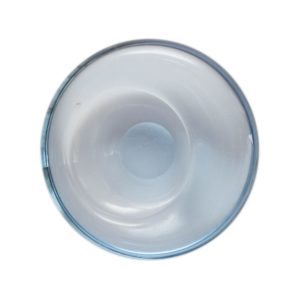

Little Akva Askebæger bowl by Per Lütken
Glass & Ceramics, Home Accessories, Kitchenware & Tableware, Special DiscountsAqua bowl designed by Per Lütken for Holmegaard. This model is part of the Akva series, which was a huge success and remained in production for more than two decades between 1953 and 1974. Signed and identified on the bottom, “HOLMEGAARD PL”. Also on bottom has the production number, 15737. Has a small chip on the rim and some age-related marks. However, all in all it is in a good vintage condition. A rare piece made from hand-blown crystal (just a small part of this series was made from crystal and not from glass). The Akva series includes items sold under different trade marks and line names: Askebaeger, Dukling, Fiona, Hellas, Lysestage, Menuet, Rondo, Selandia, Thule, Umanak, Surf etc.35 €35 € -
Sold out
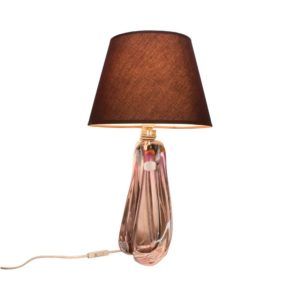
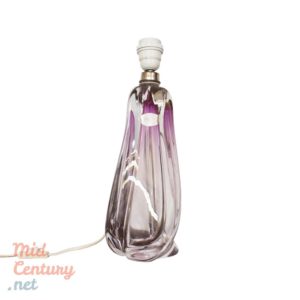
Beautiful Val St Lambert crystal lamp
Sold ItemsSpectacular table lamp signed Val Saint Lambert. This hand-made piece is made in the 1960s by the most prominent crystal manufacturer in Benelux, official supplier to H.M. the King of Belgium. Signed on the bottom, "Val St. Lambert". Still has the original label. The piece is in a very good condition. History of Val St. Lambert: In June 1826, smoke was rising from the chimney of the Cistercian abbey in Seraing, near Liège: the first furnace of the Val Saint Lambert Crystal Works had just been fired up. Val Saint Lambert would rapidly emerge as the epicentre of the Belgian crystal industry. For all the preconditions for a successful industry were met: the vicinity to the Meuse, a coal-rich region, a rail network, and even the enormous monastery facilities, which were ideally suited for artistic and craft activities on a large scale. The end of the 19th century ushered in a golden age for Val Saint Lambert. The site around the former abbey expanded into an impressive village with more than 180 worker dwellings, with small gardens, a school, a shop, and even a hospital. In the crystal works, by now world famous, some 5,000 employees produced 120,000 unique crystal creations each day. World War I brought an abrupt end to the expansion. Several key markets disappeared: the Balkans, the Russian tsars and Germany. The great depression of 1929 and the bombardment of World War II meant a further decline for the crystal works. This situation lasted up to the 1960s and 1970s, before two major innovations breathed new life into Val Saint Lambert: the introduction of the diamond disc for better cutting and engraving, and the replacement of the traditional pot furnace by a bath furnace, which melted solid raw materials into liquid glass. From the 1970s the company’s history is marked by several restructurings and takeovers. Today, the Val Saint Lambert Crystal Works are in the hands of the Onclin family, which aspires to reinstate the brand on a global level. Source: val-saint-lambert.com250 €250 € -
Sold out


Signed Daum Nancy crystal ashtray from the 1960s
Sold ItemsSpectacular crystal ashtray signed by Daum Nancy and made in France, in the 1960s. The translucent emerald color and the flower-shaped line give this piece a refined, elegant and discreet look. It’s signed on the bottom "Daun Nancy" – Cross of Lorraine – "France", in the typical manner of this famous manufacturer. Also retains the label of the first crystal shop that sold it: "Cristallerie Moser-Millot Paris 30 Bd. Des Italiens". Is in a very good condition, with minimal age related signs. Daum Nancy rose to prominence during the Art Nouveau and Art Deco period, and captured the imagination of collectors all over the world. Let us take a quick look at the interesting events that shaped the company. Jean Daum was a notary from Bitche who had lent some money to the proprietors of a glass factory in Nancy, the capital town of the French region of Lorraine. The glassworks was then named "Verrerie Sainte Catherine". In 1878, Daum took over the factory when its erstwhile owners were unable to pay off their debt and renamed it "Verrerie de Nancy". The factory initially produced glassware such as drinking glasses and pitchers and then ventured into artistic glass manufacturing in 1891. After Daum’s death in 1885, his son Auguste Daum took over the control of the company in the year 1890. The Daum brothers exhibited their "Handsome Tavern Glass" at the Paris International Exhibition in 1889. This event was of utmost significance because it marked the birth of the French Art Nouveau movement. Daum received his first "Grand Prix" in 1900 because by then his factory had established its name as a producer of high quality glass. By 1903, Daum had started making vitrified vases. These vases are singularly responsible for the kind of fame the company acquired in the early 1900s. In 1906 Daum began the manufacture of pâte-de-verre, a glass-making technique first used over five thousand years ago in the early world. In order to understand the collector’s interest in Daum Nancy objects, one must realize that this company has shaped itself up to become a producer of glass art objects and not simple glassworks. It pioneered and revolutionized old techniques by working with colour powders, acids, enamel and fluorine hydrogen. From the early 1900s emphasis was placed upon ornamental motifs in naturalistic forms. When Galle died in 1904, the Daum brothers became the leaders in the field of decorative glass and their dominance lasted for one productive, golden decade. Source: artnewsnviews.com120 €120 € -
Sold out
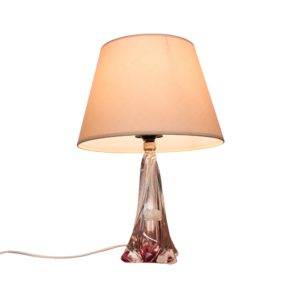
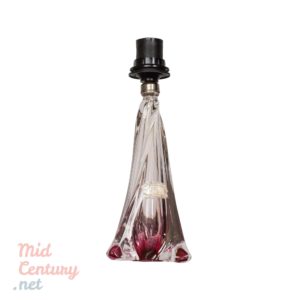
Exquisite Val St Lambert crystal lamp
Sold ItemsExquisite table lamp signed Val Saint Lambert. This hand-made piece is made in the 1960s by the most prominent crystal manufacturer in Benelux, official supplier to H.M. the King of Belgium. Signed on the bottom, "Val St. Lambert". Still has the original label. The piece is in a very good condition. History of Val St. Lambert: In June 1826, smoke was rising from the chimney of the Cistercian abbey in Seraing, near Liège: the first furnace of the Val Saint Lambert Crystal Works had just been fired up. Val Saint Lambert would rapidly emerge as the epicentre of the Belgian crystal industry. For all the preconditions for a successful industry were met: the vicinity to the Meuse, a coal-rich region, a rail network, and even the enormous monastery facilities, which were ideally suited for artistic and craft activities on a large scale. The end of the 19th century ushered in a golden age for Val Saint Lambert. The site around the former abbey expanded into an impressive village with more than 180 worker dwellings, with small gardens, a school, a shop, and even a hospital. In the crystal works, by now world famous, some 5,000 employees produced 120,000 unique crystal creations each day. World War I brought an abrupt end to the expansion. Several key markets disappeared: the Balkans, the Russian tsars and Germany. The great depression of 1929 and the bombardment of World War II meant a further decline for the crystal works. This situation lasted up to the 1960s and 1970s, before two major innovations breathed new life into Val Saint Lambert: the introduction of the diamond disc for better cutting and engraving, and the replacement of the traditional pot furnace by a bath furnace, which melted solid raw materials into liquid glass. From the 1970s the company’s history is marked by several restructurings and takeovers. Today, the Val Saint Lambert Crystal Works are in the hands of the Onclin family, which aspires to reinstate the brand on a global level. Source: val-saint-lambert.com200 €200 € -
Sold out
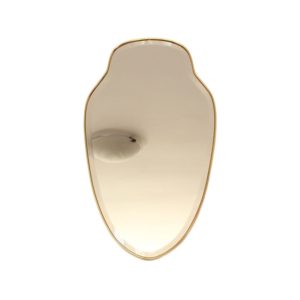
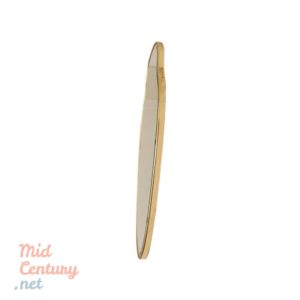
Bevelled Crystal Mirror, Belgium, 1940s
Sold ItemsSpectacular and exquisite bevelled crystal mirror made in Belgium in the 1940s. It features a brass frame and is in very good shape.100 €100 € -
Sold out
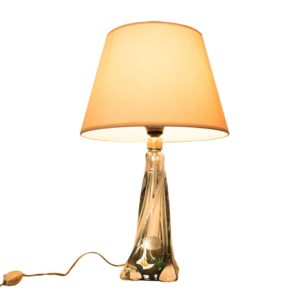
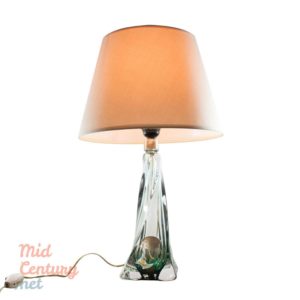
Spectacular Val St Lambert crystal lamp
Sold ItemsSpectacular table lamp signed Val Saint Lambert. This hand-made piece is made in the 1960s by the most prominent crystal manufacturer in Benelux, official supplier to H.M. the King of Belgium. Signed on the bottom, "Val St. Lambert". Still has the original label. The piece is in a very good condition.250 €250 € -
Sold out
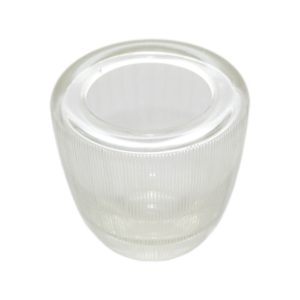

Rare Per Lütken from Unika series
Sold ItemsSpectacular and rare "Unika" series vase, signed by Per Lütken and produced at Holmegaard. Dated 1946, this crystal cut piece is made by sandblasting. This technique allowed that stylish vertical game of slim lines that defines this vase. Both the production date and the look put this piece between the Art Deco and Mid-Century aesthetics, being one of those objects that points the break with the past and the affirmation of a new style. The piece is not signed but - attention! - none of the the "Unika" vases were signed and - in this particular case - the lack of a signature is an additional guarantee of the authenticity of the piece.60 €60 €
Crystal
Home » Crystal
